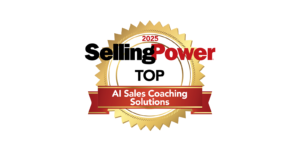Effectiveness Is Everything
Does your sales organization’s idea of improving sales effectiveness mean simply rolling out the latest and greatest sales force automation solution with little thought to the broader business, organizational and interpersonal issues that contribute to making a sales force more effective? If so, the results of a recent survey by the Aberdeen Group on sales effectiveness may indicate it’s time for them to rethink this approach
Aberdeen polled more than 200 executives in sales, marketing and IT management, asking them to share their perspectives on how issues of sales effectiveness are being addressed. And while participation was not limited to pharmaceutical industry executives, the results should nevertheless resonate with a pharmaceutical audience.
So what did the survey show? Aberdeen’s report highlights five key points:
1. Agreement is elusive
Perceptions among management and sales about this topic differed widely. While those in management tended to equate sales effectiveness with leads, the reps themselves – while acknowledging the importance of leads – focused more on maximizing the value from existing leads and eliminating needless paperwork.
2. Get it together
Collaboration was nearly universally identified as a growing factor driving effectiveness. This includes not only team-based selling, but also greater collaboration between the sales and marketing departments. This sort of alignment should be encouraged and formalized in structures from the very top tiers of management.
3. Users are choosers
Where sales technology investments have failed to meet expectations, say the report’s authors, the common factor is typically that the investments have been directed at the needs of sales management, and not the front line reps. The more involved sales reps themselves have been in making technology decisions, the more the resulting solutions have driven effectiveness.
4. Drive competitive advantage
Aberdeen found that some of the most widely adopted sales technologies, almost by definition, fail to impact effectiveness simply because everyone is using them. What does drive competitive advantage, however, is the utilization. Sales organizations that saw genuine differentiation applied and utilized these technologies in innovative and targeted ways that focused on impacting the sales process.
5. To do list
Based on these findings, Aberdeen suggests that sales organizations realign their spending and directions toward “helping sales sell.” This means targeting technology investment toward supporting the sales process, prioritizing collaboration within and across departments and creating formal “marketing process enablers” that align marketing and sales more directly.
Get our Enewsletter
Get the latest sales leadership insight, strategies, and best practices delivered weekly to your inbox.
Sign up NOW →